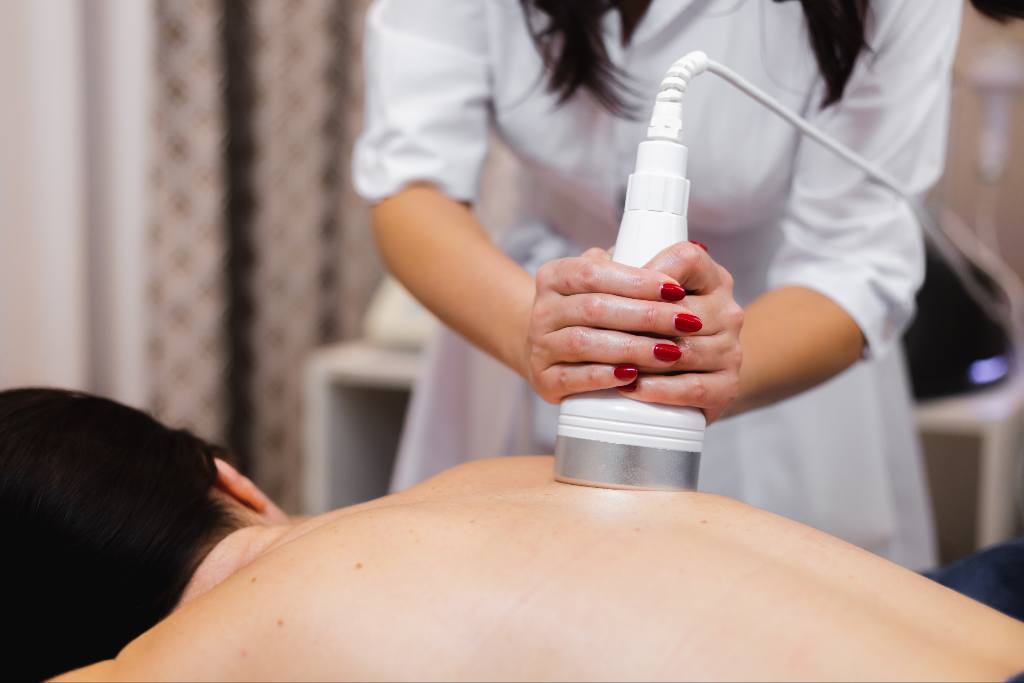For anyone dealing with chronic pain or lingering musculoskeletal injuries, shockwave therapy has become a well-established, non-invasive treatment option. But before trying something new, one of the most common questions people ask is simple: Does shockwave therapy hurt?
Understanding how the treatment works and what sensations to expect during your first session can help reduce anxiety and set you up for a smoother experience. Here’s a clear breakdown of what you can anticipate.
What Is Shockwave Therapy?
Shockwave therapy uses high-energy sound waves to stimulate healing in damaged tissues. These waves are directed at the affected area through a handheld device. The treatment is typically used for conditions such as:
- Plantar fasciitis
- Tennis elbow
- Achilles tendinopathy
- Calcific shoulder tendinopathy
- Muscle and joint pain
Over time, these sound waves help reduce inflammation, improve blood flow, and encourage the body’s natural healing process.
So, Does Shockwave Therapy Hurt?
The short answer: It depends on the individual and the condition being treated.
Many people report mild to moderate discomfort during the procedure, but it’s typically tolerable. The sensation is often described as:
- A rapid tapping or pulsing feeling
- Similar to snapping a rubber band on the skin
- Mildly uncomfortable at the most sensitive spots
Pain is more likely when the therapy is targeting areas with inflammation or scar tissue. However, the intensity can be adjusted by the provider during the session, so any discomfort is usually manageable.
Importantly, most people find the discomfort decreases significantly as the treatment progresses, often within minutes.
What Happens During Your First Session?
Your first visit usually begins with an assessment of your pain or injury. After identifying the treatment area, your provider will:
- Apply a contact gel to improve wave transmission.
- Place the applicator directly on the skin.
- Deliver pulses of acoustic energy for a few minutes.
Each session typically lasts between 10 to 20 minutes, depending on the condition. You may feel slight discomfort when the device targets tender spots, but this is expected and not harmful.
What About After the Treatment?
Following the session, some people feel immediate relief. Others experience mild soreness, similar to post-workout muscle fatigue. This is a normal part of the healing process and should subside within 24 to 48 hours.
In most cases, there’s no downtime. You can return to daily activities the same day, though your provider might recommend avoiding intense exercise for a short period.
How Many Sessions Are Needed?
Shockwave therapy isn’t usually a one-time fix. Most treatment plans involve a series of sessions, commonly 3 to 6 spaced out over a few weeks. The cumulative effect tends to deliver the best results, especially for chronic conditions.
Tips to Prepare for Your First Appointment
If you’re still wondering, “Does shockwave therapy hurt?” here are a few ways to prepare mentally and physically:
- Wear loose, comfortable clothing that allows access to the treatment area.
- Communicate openly with your provider about your pain threshold.
- Know that the first session is often the most uncomfortable; subsequent ones usually feel easier.
Final Thoughts: Expect Relief, Not Regret
While everyone’s pain tolerance is different, shockwave therapy is widely tolerated and recognized for its ability to speed up recovery. The sensations may be unfamiliar at first, but the discomfort is brief and often outweighed by the long-term relief that follows.
If you’re considering it, understanding what to expect removes a lot of uncertainty. And when applied by a trained provider, the benefits of shockwave therapy are well worth the few moments of pressure you might feel.

